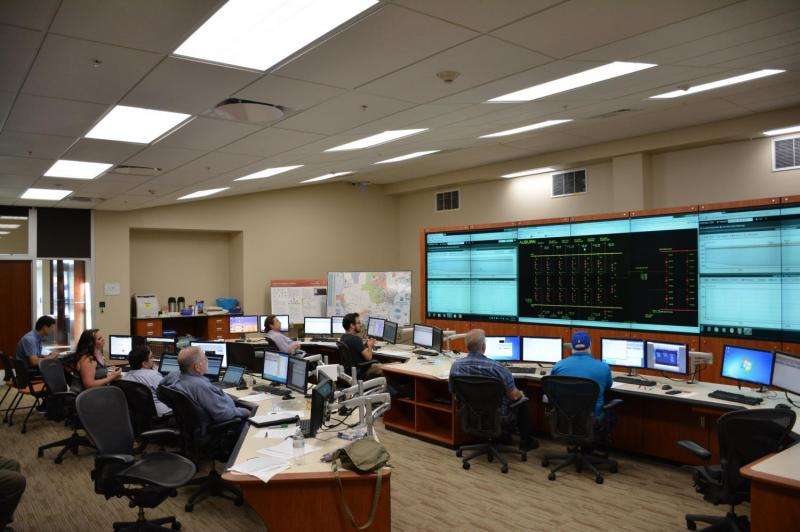Realistic data needed to evolve the 21st century power grid

Say you have a great new theory or technology to improve the nation's energy backbone—the electric grid. Wouldn't it be great to test it against a model complete with details that would tell you how your ideas would work? But it's a challenge, because existing sets of data are too small or outdated; and you don't have access to real data from the grid because of security and privacy issues.
To overcome this issue, the Department of Energy's Pacific Northwest National Laboratory is helping to create open-access power grid datasets for researchers and industry. DOE's Advanced Research Projects Agency—Energy has awarded PNNL $3 million for two projects in a new program—Generating Realistic Information for the Development of Distribution and Transmission Algorithms or GRID DATA.
In one project, PNNL will develop a sustainable data evolution technology or SDET. First, researchers will gather features and metrics from many private datasets provided by the laboratory's industry partners. The team includes the National Rural Electric Cooperative Association, GE Grid Solutions (formerly Alstom Grid), PJM Interconnection—an eastern regional transmission organization, the California Independent System Operator and Avista, a western utility.
Datasets essentially describe the physical power grid and the transactions that occur on it. Data points can include how long it takes to ramp up a power plant, the resistance to flow on a power line, maximum power a certain plant can generate, connectivity—how electricity moves from point to point, the configuration of the grid at any given point, and much more.
The combination of these elements is vast and they all determine the performance of the grid, which has been made more complex with the relatively recent addition of factors such as renewables and intelligent devices. So, researchers are seeking new methods to make it operate reliably for the least amount of expense to owners, operators and ratepayers.
"Creating algorithms to optimize the grid essentially comes down to a challenging mathematical problem," said Henry Huang, an engineer at PNNL. "It's like the old saying 'garbage in, garbage out.' We need to get the right numbers—realistic numbers—into the algorithms needed for modeling so that utilities and grid operators feel confident in adopting new technologies being developed to modernize the grid."
PNNL, together with partners, will develop data creation tools and use them to generate large-scale, open-access, realistic datasets. Finally, they will validate the datasets that are created using industry tools provided by GE Grid Solutions.
The data creation tools as well as the datasets will be made available through a data repository, which also will be created by the second PNNL project awarded by ARPA-E.
PNNL will partner with the National Rural Electric Cooperative Association to build a power system model repository, which will host the open-access power grid models and datasets.
This Data Repository for Power System Open Models With Evolving Resources, or DR POWER, approach will review, annotate, and verify submitted datasets while establishing a repository and a web portal to distribute open-access models and scenarios. It will include the ability to collaboratively build, refine, and review a range of large-scale realistic power system models. It will also include datasets created by other GRID DATA projects.
For researchers, this represents a significant improvement over current small-scale, static models that do not properly represent the challenging environments encountered by present and future power grids. The repository and the web portal will be hosted and maintained in PNNL's Electricity Infrastructure Operations Center.
Provided by Pacific Northwest National Laboratory





















